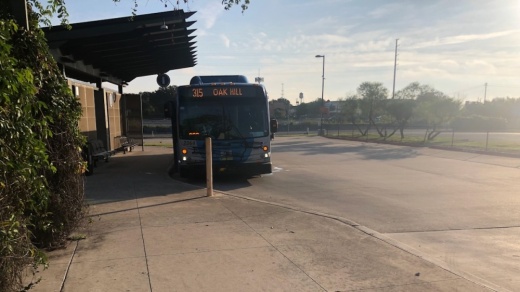The updated approach to public safety began in early 2020. Capital Metro has already hired two community intervention specialists and a public safety ambassador supervisor.
According to a survey conducted by Capital Metro, 80% of customers said “security is good and do not seem to fault CapMetro for safety issues.” However, Gardner C. Tabon, Capital Metro chief safety officer, said many respondents said they would feel safer with a greater security presence.
“[The Austin Police Department], although stretched, is providing a good service for us. They really are a great partner to us. They are responding in a way that our customers are feeling OK,” Tabon said. “When you're expanding a service, you're adding services, as we are currently in the process of doing; it's good to prepare for what's coming.”
In addition, 63% of front-line Capital Metro staff, which includes bus operators and road supervisors, indicated they “view security as needing improvement.”
A three-pronged approach
The transit police would be armed and respond to “specific, escalated public safety situations,” according to Capital Metro documents. They also would have social service skills; respond to transit-related terrorism; and patrol Capital Metro bus stops, transit centers and rail stops.
The intervention specialists and public safety ambassadors would be unarmed. Intervention specialists would receive training for social service needs. Public safety ambassadors would identify safety issues and help connect people with the intervention specialists and transit police.
The cost and number of officers are still being determined, but there would be more public safety ambassadors than police officers, and the force’s size would be comparable to local schools and universities, Tabon said.
Creating the transit police force would take around 18 months, Tabon added.
As a part of the effort, Capital Metro would also create a committee to oversee the public safety department.
The public safety vision
APD responds to security incidents for Capital Metro, but the public transit agency’s chief operating officer, Dottie Watkins, said the expanded public safety department would allow the agency to offer services in line with its security needs.
“We want to be purposeful and collaborative and supportive of both our customers and our transit system at the same time and really make sure that we're not saying, ‘Hey, this guy's causing a problem, let's call a cop,' when what we really needed was a social worker,” Watkins said.
“The Austin Police Department is a great partner, always has been and always will be, but their mission is much broader than what we need as a system of our size today and definitely as we look to grow over the next decade,” she added.
According to a Capital Metro spokesperson, the board of directors will vote during its Aug. 30 meeting on a resolution to include sufficient funding in next year's budget to continue the public safety department expansion efforts. The board will then vote on the proposed budget, which includes approximately $590,000 for hiring and other operational costs for transit police, during its meeting Sept. 27.





